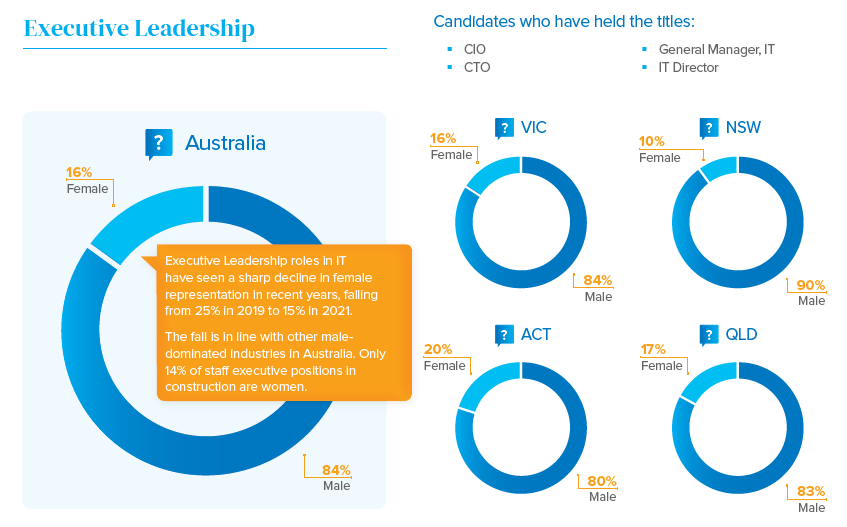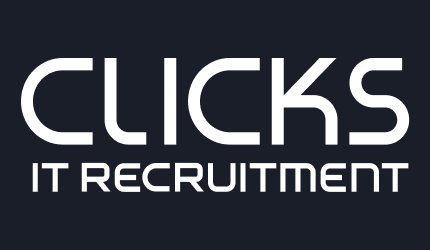My mum always said, if you fail to plan, you plan to fail. I’ve tried to adopt this approach in most areas of my life, and it has served me well. That’s why when it comes to achieving greater diversity in your workplace, setting goals is key. It provides you and your organisation with clarity and direction, and creates accountability. In my experience, a disciplined approach helps drive change.
In Clicks’ 2022 Gender Diversity report we saw an unexpected – and alarming – change. Representation of female IT candidates in executive leadership positions fell for the first time since we released our first report. After remaining steady with at least 20% representation, women in senior positions within the IT sector have fallen to 15%. This figure is down from 25% in 2019. Of the sixteen technology verticals we survey, only two have achieved equal gender representation.

Case Study: How to Hire an It Executive and Meet Gender Diversity Goals
Read MoreWhen it comes to setting effective goals, here’s what I recommend
1. Establish a project team. Ensure the group is well represented with HR, staff and managers within the business. It’s important to have a mix of people who are passionate advocates, and those that can influence and control the outcome such as hiring decisions. However, all of this is academic if you don’t have the right executive sponsorship.

2. Define your target group. Be specific when defining your target group. If you are targeting gender diversity, your target group could be women in management roles in IT teams. Don’t try and tackle all areas of diversity at once – start with an area where success is achievable. This will help you develop a repeatable framework that you can successively apply across the organisation. Having an early win is also a great engagement booster.
3. Review employee and recruitment data. This data should provide useful insights about turnover and hiring trends. Having valid data also ensures you are focusing on the right thing. Say you want to increase women in your IT security team…if only one in every ten candidates interviewed was female, you would focus on the recruitment attraction and selection process. But you may focus on retention efforts and team culture if the attrition rate of female IT security staff is higher than the organisation’s average. Using data can help you create SMART goals or define your Key Results if your organisation uses OKRs.
Case Study: Strategies to Promote Gender Diversity When Hiring
Read More
4. Conduct a SWOT Analysis to understand what the available resources and current barriers to achieving your goals are. Map out what is working for your organisation and what your strengths are in achieving more diversity. It could be enthusiastic support from your leadership team, partnering with great diversity specialists, or initiatives that are already working.
Consider how to minimise weaknesses and what may be preventing you from achieving your goals. Are there gaps in:
• employer brand
• training and development
• organisational culture and systems
• attraction and retention strategies
• hiring processes
• work flexibility
• role design
• leadership and management
• behaviours, attitudes, or is unconscious bias at play?
Working this out will also help you determine where your opportunities and threats are.
5. Establish Timeframes. According to the WGEA, most organisation require five years to see any significant shift in gender diversity. That’s why it is important to be realistic with your timeframes. Allow more time for your big goals. But set achievable timeframes for smaller, supporting initiatives. Your wins will motivate you to continue.

6. Embed accountability. Reporting on progress towards your goals provides visibility and creates accountability. You could also provide a forum for managers responsible for driving the change to come together to share what’s working or not working. Finally, consider aligning diversity goals to individual KPIs – just as you would with other business objectives. After all, research shows diverse workforces are more profitable.
What to aim for?
At the risk of being controversial, the first thing organisations need to do is ditch the mindset that “the most qualified person should get the job”. This meritocracy approach hamstrings all diversity strategies. Space must be carved out, up to Board level, for those representing minority cohorts.
Visualise your end-game. What does an optimally diverse workforce look like in your organisation (hint: there is no right or wrong answer, but it’s essential that you know what it is for you)? How does that impact your employer brand and commercial outcomes? Does it change your client base, your project pipeline, the suppliers you work with? What impact will these initiatives have on your bottom line? Being serious about this requires vision, courage and determination in equal measures. Do you have a company float at Mardi Gras? Have you provided creches in each office? Are you famous for providing meaningful careers in a safe environment for people with autism or First Nations Australians?
Let your data and analysis guide what is right for your organisation. Start small if you need to. Consult broadly and share your progress. As my last MD often said, “what’s measured gets managed”.
Clicks has trusted partnerships with Australia’s most effective diversity enterprises. Whether your goals include more female, neurodiverse, LGBTIQ+, or indigenous workers, we have a partner network to guarantee an appropriate and culturally sensitive recruitment experience.
For any hiring needs please reach out to your Clicks Account Manager or 1300 CLICKS for a confidential discussion. We believe our talented and diverse workforce is the reason we’re so successful. We work hard to support our clients in achieving the same success by increasing the diversity of their own workforces.

Chief Operating Officer









